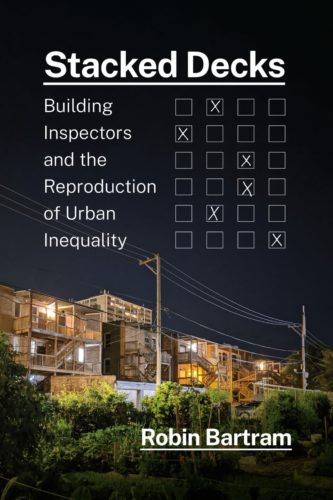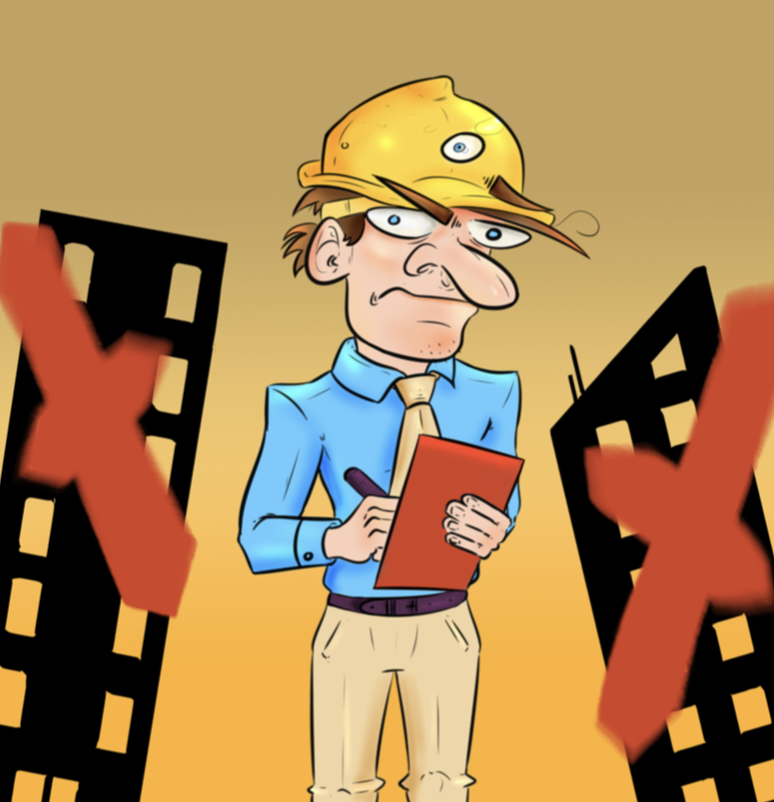Chicago has a big problem with unsafe housing, especially on the South and West Sides. This problem has proved to be deadly: fires and collapses have killed and injured dozens of residents in recent years. And in Chicago, as elsewhere in the US, deadly house fires are concentrated in the poorest neighborhoods: Austin, Back of the Yards, Englewood, Humboldt Park, Roseland, and West Englewood have the highest risk for house fires in Chicago. But my seven years of research in the city—shadowing building inspectors and interviewing homeowners—has uncovered an additional hidden worrying reality: the current strategy to address unsafe housing might only be making things worse for already vulnerable homeowners.
Until the City’s system of code enforcement provides subsidies for fixing up buildings to maintain values and meet building codes, we have little hope of effectively ensuring safe and decent housing. Without resources to make repairs, many homeowners—especially seniors of color and owner-occupiers of two and four flats—are forced from their homes, into debt, or left to live in dangerous conditions.
To be sure, the cultural and legal framework in the US treats homeownership as a private affair. Individual homeowners are held responsible for maintaining their property. But this ignores the history of race, gender, and the housing industry, in which—as demonstrated by scholars such as Beryl Satter, Keeanga-Yamahtta Taylor and Rea Zaimi and documented by activist-artist Tonika Lewis Johnson—mortgage lenders and others explicitly targeted Black residents, and Black women, for predatory loans for homes in disrepair. Black women were disproportionately sold homes they could not afford and that cost more money to maintain, which lined the pockets of mostly white realtors, lenders, and others.
The racist and sexist history of the housing market, along with other forms of wealth extraction, has long lasting effects. Black women who are now seniors are more likely to have been targeted for inadequate housing and loans. And because they have been denied the resources to fix their properties, they are disproportionately dealing with unsafe and dilapidated homes today. This history also means that there is a case to be made that the government-backed housing industry has a responsibility to these homeowners to make amends. But this is not the way most cities deal with repairs.
Building code inspections and housing court is the system in place in most cities, including Chicago, to deal with housing in disrepair. Inspectors decide which buildings need repair work and send owners to court if conditions are dangerous. I shadowed Chicago’s inspectors, sat in on housing court, and uncovered a disconcerting fact. Inspectors are stuck in a catch-22: if they mandate repairs, this adds to the financial struggles of low-income homeowners; but if they overlook issues, homes become even less safe.
“It’s a tough issue,” one Chicago building inspector told me. “I mean, let’s face it, as people have become poor and it’s harder to maintain housing, there’s no question that the quality of the housing is deteriorated. Then you have to decide…now what do we do? That’s a nightmare.”
I joined another inspector at a single-family building in Englewood. The rickety front porch caught the inspector’s eye immediately. He wiggled the handrail and bounced up and down on the porch a few times to demonstrate its creaks and instability. “This is going to be a court case,” he said. “I can’t walk away from this.” In the current system, inspectors often have no other choice but to send property owners to court, especially when they find issues relating to exterior walls and porches.
Housing court judges can give compassionate rulings, but compassionate code enforcement doesn’t cut it either because people lack resources to make repairs. I regularly saw inspectors and housing court judges trying to help low-income seniors in Chicago. They extend court cases, give homeowners more time to make repairs, and do not levy fines or fees.
To be sure, extra time—to fix repairs, to come up with funds to make repairs, or to find an affordable architect or contractor—is likely a welcome relief to many homeowners. But this is not enough. Compassion toward low-income homeowners does not prevent costly outcomes.
Cheryl lives with her friend and granddaughter in Englewood. She retired years ago but recently went back to work to try to pay off her $40,000 credit card balance. She owns her house outright, but had to pay out of pocket to fix the damage to her basement after it flooded a few years earlier. “I have to pay all this stuff back,” she told us, “So, financially it’s not good…That’s why I’m working another job.”
Other homeowners my research team and I spoke to had remortgaged their homes or taken out high interest loans to pay for repairs. Repair work can mean that housing is unaffordable even for homeowners who have long paid off mortgages or inherited their homes.
The decisions homeowners like Cheryl make to take on debt are necessary to fund the costs of repair work. But the logic of the housing market may mean homeowners do not get returns on their investments, particularly because of the racism undergirding assessment of properties in many neighborhoods of color. As scholars Elizabeth Korver-Glenn and Junia Howell show, homes in Black neighborhoods like Englewood around the country are over-assessed and undervalued.
Common wisdom holds that improvements and investments in property pay off in the long term, but neighborhood location outweighs property condition in property appraisals. As such, land values can cancel out any effect that repairs might have on a property, meaning that homeowners in low-valued neighborhoods may not recoup the money they invest into their homes.

Maintenance work often makes homes safer and more pleasant places to live, but should we really expect homeowners to spend money on their homes for repairs, if we cannot guarantee they have a pathway out of debt because their neighborhoods are earmarked by racist reputations and appraisals? Or does the government-backed housing market have a responsibility to step in?
Cities like Chicago do set aside funds to cover costs of emergency repairs of roofs and porches for low-income homeowners. My research team interviewed homeowners who had applied for the program and saw first-hand that the repair work they provide is critical.
Unfortunately, help from the City is often too little, too late. In fact, Cheryl was selected in Chicago’s emergency repair lottery. The City repaired her roof at no cost. But this is just not enough—she’s still paying off the credit card debt for her basement.
The city’s Department of Housing is inundated with applications for the emergency repair program and there are not enough resources to go around. We need to expand these programs and allocate more funds: homes should not need to be in a state of emergency to get the attention of local governments.
Providing adequate resources for repairs could also help to prevent developers and others profiting from dilapidation. Property in disrepair is frequently used as justification for demolition or redevelopment, from which existing homeowners are not guaranteed to benefit while developers and others profit.
But, until code enforcement goes hand in hand with widespread subsidies for fixing up buildings, we have little hope of effectively ensuring safe and decent housing or protecting our most vulnerable residents.
Robin Bartram is a sociology professor at Tulane University and author of the upcoming book Stacked Decks: Building Inspectors and the Reproduction of Urban Inequality, which will be published this August (it can be ordered from the University of Chicago Press).

